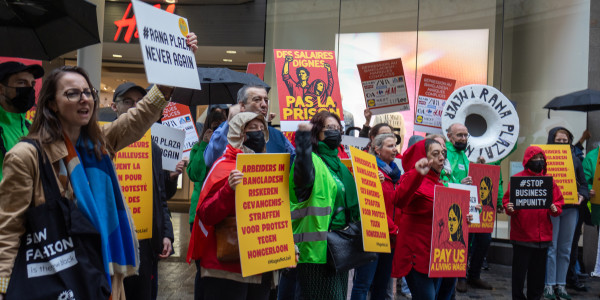

Total importation of goods from non-EU countries into the EU (EU28) reached €2.057 trillion in 2019. Of that total, an estimated €50.08 billion constituted the importation of products that were produced with child labour. In other words, the EU footprint child labour imports was 2.433% – or 1/41 of all EU imports – in 2019 (please see our application further detailing these findings).
From the perspective of child labour reduction, a free-market economy is a two-edged sword. On the one hand, vibrant trade has the power to lift entire societies out of poverty. Economic openness “has helped integrate many developing countries into the world economy, lifting hundreds of millions of people out of poverty and decreasing inequalities between countries” (European Commission, 2021). The macro context is also reflected at the household level: caregiver income is the largest explanatory factor for the phenomenon of child labour. On the other hand, a laissez-faire approach to child labour can produce a vicious cycle. The supply of child labour expands the overall labour supply, holding down adult wages? This fact prevent certain low-income households from withdrawing their children from labour. It does perpetuate inter-generational poverty.
Reducing child labour with effective national regulation, supported through bilateral trade conditions, may actually liberate a trade partner at a certain development status from a bad equilibrium, where child labour competes with adult labour to keep wages low. Two further economic reasons speaking for intervention: hazardous child labour can produce morbidity and mortality outcomes that counteract short-term economic gains, and child labour results in less human capital formation over time, as school absenteeism is associated with the forgone economic returns to education.
Importing countries also have a self-serving interest in the abolishment of child labour. Goods made with child labour may undercut the price of goods offered by domestic competitors. This “unfair advantage,” associated with job losses in importing countries, undermines the goal of equitable trade. It can, if left unchecked, precipitate a race to the bottom.
The good news is that with overall growing global prosperity and increasing attention over the past decades, the international community now has a realistic chance of abolishing child labour. And from an empirical perspective, jostling a country from a bad child labour equilibrium to a good one is possible once it has reached a certain level of development. Given globalised markets, the rules of trade play a key role in shaping child labour and the outcomes of children’s well-being.